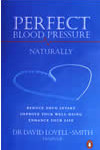Different Types of Angina
 It is important to distinguish between the typical stable pattern of angina and “unstable” angina.
It is important to distinguish between the typical stable pattern of angina and “unstable” angina.
“Stable Angina”: the most common variety, often recurs in a regular or characteristic pattern.
Commonly a person recognizes that he or she is having angina only after several episodes have occurred, and a pattern has evolved.
The level of activity or stress that provokes the angina is somewhat predictable, and the pattern changes only slowly.
“Unstable Angina”: Instead of appearing gradually, angina may first appear as a very severe episode or as frequently recurring bouts of angina. Or, an established stable pattern of angina may change sharply; it may by provoked by far less exercise than in the past, or it may appear at rest. Angina in these forms is referred to as “unstable angina” and needs prompt medical attention.
The term “unstable angina” is also used when symptoms suggest a heart attack but hospital tests do not support that diagnosis. For example, a patient may have typical but prolonged chest pain and poor response to rest and medication, but there is no evidence of heart muscle damage either on the electrocardiogram or in blood enzyme tests.
The other forms of angina pectoris are:
Prinzmetal’s or Variant Angina: is a long recognized but quite rare type of angina. This type is caused by vasospasm, a spasm that narrows the coronary artery and lessens the flow of blood to the heart.
Microvascular Angina: is a recently discovered type of angina. Patients with this condition experience chest pain but have no apparent coronary artery blockages. Doctors have found that the pain results from poor function of tiny blood vessels nourishing the heart as well as the arms and legs. Microvascular angina can be treated with some of the same medications used for angina pectoris.
 Then you need to read this book, by New Zealand author, Dr. David Lovell-Smith.
Then you need to read this book, by New Zealand author, Dr. David Lovell-Smith.
In this book Dr. David Lovell-Smith describes how his patients successfully used diet, lifestyle changes and Transcendental Meditation to bring their blood pressure down.
This book offers new hope and insight for those with high blood pressure but it is not for hypertensives alone. The knowledge which Dr Lovell-Smith presents in his book is timely and relevant, and its exposition is long overdue.
Shop price is $34.95 Our price is $25.00 (including postage – NZ only)
